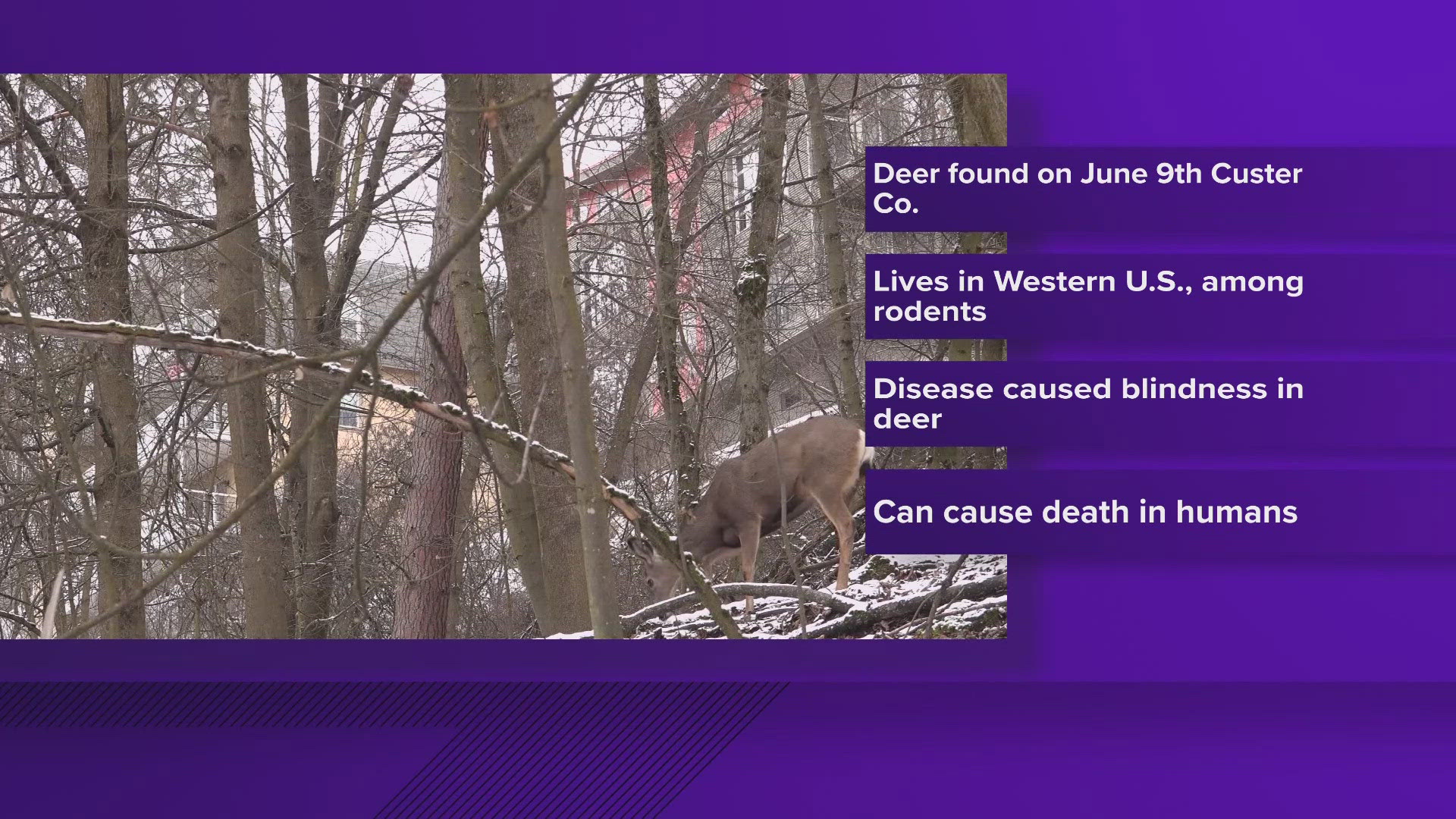PULLMAN, Wash. — Washington State University (WSU) pathologists confirmed on Wednesday that a case of plague was found in a mule deer found blind and emaciated in Idaho.
The pathologists say plague occurs naturally in the western United States and is found among wild rodents and other animals.
According to a WSU press release, there have been five previous documented cases of plague in deer, but none in Idaho. They say the disease most commonly manifests with lesions in the deer’s eyes and results in blindness, a condition labeled as ocular plague.
The pathologists say that, in humans, exposure to plague can lead to severe illness and death without early antibiotic treatment.
Wildlife officials recommend hunters and others avoid contact with any animal that is blind or exhibiting abnormal behavior and record the exact location and species of the animal and report it to their state wildlife agency.
“Deer and other ruminants don’t appear to be particularly susceptible to plague, but in the few published cases, it has specifically been found in the eyes,” said Elis Fisk, a pathology resident at the Washington Animal Disease Diagnostic Laboratory in the WSU College of Veterinary Medicine. “The disease doesn’t necessarily kill the deer on its own, but it causes blindness, likely making them vulnerable to predators and significantly reducing their chances of survival.”
The deer was spotted and reported by a member of the public on June 9 in Custer County. An Idaho Department of Fish and Game officer located and euthanized the animal the following day. Tissue samples and the deer’s eyes were submitted to the Washington Animal Disease Diagnostic Laboratory (WADDL) in Pullman for testing.
“When we received the samples, the eyes appeared highly abnormal,” Fisk said. “Usually, when you cut into the eye, it contains clear fluid, but in this case, it was filled with thick, reddish-brown debris. The other interesting thing was the retina was detached, and there was significant inflammation and necrosis.”
Kyle Taylor, a pathologist at WADDL and faculty member in the College of Veterinary Medicine, was aware of previous cases in Wyoming and Oregon and noted similarities.
“It isn’t the first thing to jump to because there’s plenty of other bacteria it could have been,” Taylor said. “But it seemed prudent to test for plague to rule it out, especially since the samples could still have contained live bacteria, posing a safety risk to anyone handling them. The chances were small since proper safety protocols were followed, but it’s not something you want to overlook because plague is a potentially fatal disease, yet treatable if caught early.”
Plague was only detected in the deer’s eye samples and not in its organs or other tissues.
While the exact reason for this remains unclear, Fisk and Taylor speculate that by the time the samples were collected and examined, the bacteria may have already cleared from other tissues, leaving only the eye damage behind.
WSU pathologists say determining the prevalence of ocular plague in deer is challenging because infected animals will likely fall prey to predators or die naturally before humans encounter them.
“It’s probably just a super rare finding that anyone came across this animal before it died in the wild,” Taylor said.
Because plague is a regulated pathogen, WSU was required to report the case to the Centers for Disease Control and Prevention. WSU says all samples were also destroyed after testing for safety reasons.

